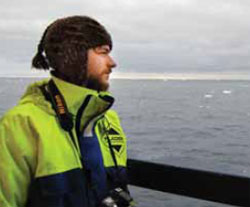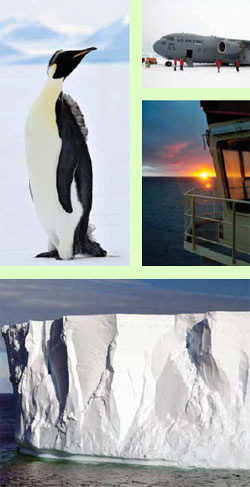Riding the waves in search of cosmic rays
 |
As physics lab environments go, one could do worse than sharing the expanse of the Atlantic Ocean or the animal-dotted ice shelves of Antarctica with 20 pancake-cooking, dart-playing Swedish sailors.
Such was the setting for three University of Wisconsin undergraduates who took weeks-long turns aboard the Oden icebreaker last winter as it travelled from Sweden to Antarctica, carrying a small particle detector.
The young scientists monitored the detector's response to particle showers that arise when low-energy cosmic rays hit the atmosphere. The intensities of these secondary particles vary as you travel from the equator to the poles. Measuring those variations along the ship's north-south track will help calibrate IceTop, an array of cosmic-ray detectors in Antarctica that's part of the IceCube neutrino observatory.
 |
| Photos: Kyle Jero |
While taking data, the students also had to calibrate their stomachs.
“When we were on the Oden, the first thing they said was that we could rock up to 45 degrees. I thought, ‘That is insane,'” says Samantha Jakel, then at UW-Rock County. Soon, though, she found she was able to roll with the pitches.
Jakel got up close to killer whales and Adélie penguins. “The penguins are adorable and I think they know it,” Jakel says. Indifferent seals stayed put even as, only yards away, the 13,000-ton vessel broke the ice where they squatted.
“Icebergs were all around, anywhere from the size of your kitchen table to things bigger than anything I've ever seen,” says Kyle Jero, a physics major at UW-River Falls.
As short-term denizens of a Swedish ship, the students joined the crew in observances of pea soup-and-pancakes Thursdays and in ping-pong matches between work shifts.
“It was perfect,” says Drew Anderson, also at UW-River Falls. “The crew was fun. We got all the data we were looking for. It really couldn't have gone much better.”
Leah Hesla
Click here to download the pdf version of this article.






